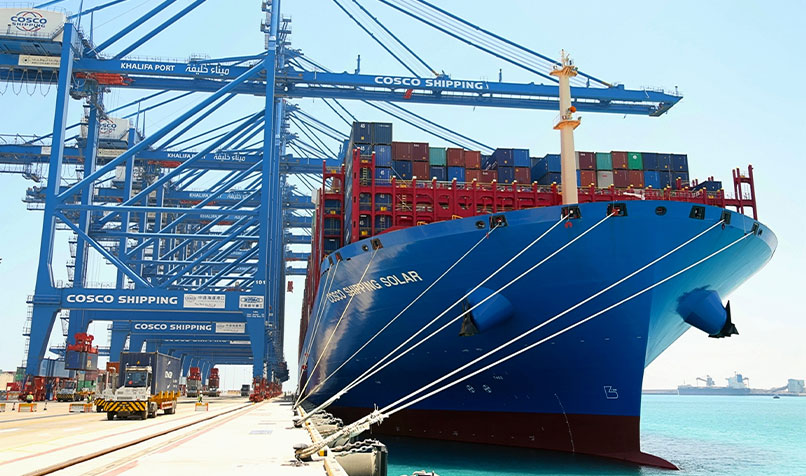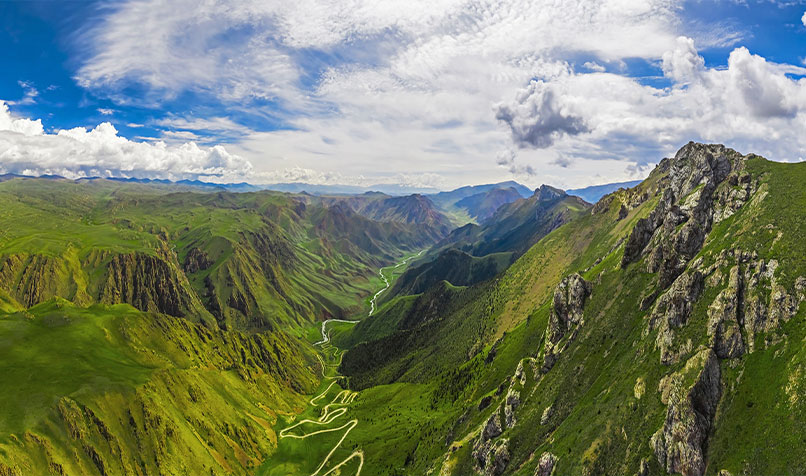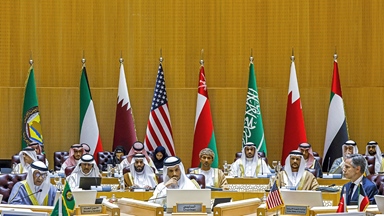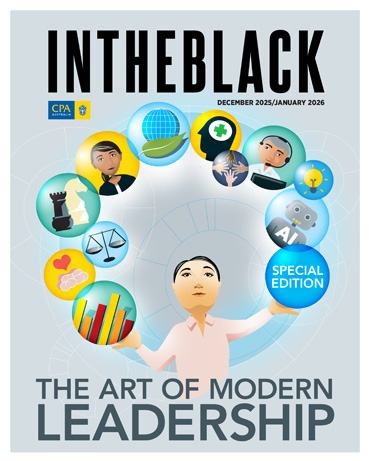Loading component...
At a glance
- Geopolitical pressures are contributing to the Gulf States’ growing trade ties with Asia.
- Trade is flourishing in non-oil sectors, including construction and renewable energy.
- The Gulf States and China are gradually turning away from the US dollar for trade settlements.
Once connected by ancient silk road trade routes, Asian countries and the Gulf States are forging new economic alliances driven, this time, not by spices and silk, but by construction, energy and technology deals.
The rewards on offer are massive potential windfalls for governments, entrepreneurs and investors as Gulf Cooperation Council (GCC) nations — Bahrain, Kuwait, Oman, Qatar, Saudi Arabia and the United Arab Emirates (UAE) — seek to expand their political and trade ties beyond the West.
Alexandre Kateb, an economist and founder of business intelligence platform The Multipolarity Report, says there has been a clear rebalancing of the GCC’s oil exports from the West to Asia, particularly China and India.
“This has been ongoing since the early 2000s with the rise of China and its growing energy demands, but it has taken on a new dimension with the United States becoming self-sufficient in terms of energy supplies,” Kateb says.
Some Gulf States are also trying to limit their reliance on the US dollar for trade transactions, with China eager to have more of its oil exports sold and settled in Chinese currency.
Eyes on the prize

Gulf–Asia trade is forecast to rise from US$451 billion (A$696 billion) in 2023 to US$682 billion (A$1 trillion) by 2030, according to Asia House, a UK-based think tank.
Freddie Neve, lead Middle East associate at the advisory service, says the Middle East’s pivot to Asia is undeniable, as evidenced by huge trade deals, high-level bilateral political exchanges and growing investment by sovereign wealth funds in Asia.
Underlining the shift, Asia House forecasts that Gulf–China trade will overtake Gulf trade with Western countries in 2027. “That will be a significant watershed moment,” Neve says.
He adds that Gulf economic diversification has created opportunities for Asian firms in areas including construction, infrastructure, technology, sustainability and financial services. “So, we only see the Gulf–Asia relationship being primed for further growth.”
China and India are the biggest Asian players in the Middle East, thanks in part to the Gulf States’ “Look East” policies. The Belt and Road Initiative, a massive China-led regional infrastructure development strategy, has been instrumental in ramping up infrastructure and trade connectivity with the Gulf States.
"This is going to be a major bridge that will not shake because there is ambition on both sides and there’s political willingness on both sides to look towards Asia."
For example, strategic ports such as Khalifa in the UAE and Duqm in Oman are being developed or upgraded with Chinese backing.
Bilateral trade between India and the Gulf States hit US$161.5 billion (A$249.4 billion) in 2023–24, with the Gulf States playing a critical role in India’s energy security.
Dr Gopi Krishna Bhamidipati is an international relations expert at Virginia Tech and a contributing analyst to the Arab Gulf States Institute in Washington DC.
He says the potential to keep boosting India–Gulf trade is significant, especially on the back of the UAE–India Comprehensive Economic Partnership Agreement that was signed in 2022, and the minilateral grouping between India, Israel, the UAE and the US (I2U2), which is promoting energy, water, food security and transport collaboration.
“Those multilateral partnerships are quite natural and important from India’s perspective,” Bhamidipati says.
Ancient ties re-emerge
In 1453 CE, the Ottoman Empire closed the famed Silk Road trade route — a network of paths founded by China’s Han Dynasty and which for about 1500 years had channelled goods such as food, animals, silk, spices and medicines between China, the Middle East and Europe, including through ports on the Persian Gulf.
Bhamidipati notes that ancient ports such as Muscat and Sohar in Oman and Basra in Iraq played vital roles as maritime hubs in the Silk Road network for selling Chinese silk, Indian cotton and South-East Asian spices.
This helped to connect East Asia, South Asia, the Middle East and Europe. “What we are seeing is essentially the re-emergence of those ancient ties, but of course, in the modern trade environment, we’re seeing different items being traded,” he says.
To fuel industrial growth, China and India, in particular, have been increasing imports of hydrocarbons from the Gulf States, which hold some of the world’s largest reserves of oil and natural gas. Japan and South Korea are also longstanding importers of Gulf energy reserves.
Neve contends that the move to access Asian firms’ expertise and products in construction, telecommunications and consumer electronics, among others, completes “one of the most fundamental geopolitical and economic shifts of our time”.
The activities of sovereign wealth funds in Gulf countries are also crucial. For example, Abu Dhabi-based MGX is an artificial intelligence-focused investment vehicle founded by sovereign wealth fund Mubadala and AI company G42. It is expected to help build data centres and infrastructure worth hundreds of billions of dollars.
Cliff Ip FCPA, a member of CPA Australia’s Divisional Council for Greater China, and managing director and CEO of investment banking platform Wings Securities in Hong Kong, says sovereign wealth funds have increased their investments in Asian markets, notably in fintech, green energy, infrastructure and manufacturing.
“The Gulf area needs different investments to help change the direction of the economy and reduce the reliance on oil and gas, so there are lots of opportunities,” he says.
Ip, who travels to the Gulf States regularly to facilitate investment deals, also thinks the status of Hong Kong and Dubai as major international financial centres creates the opportunity for cross-border collaboration to advance sustainable finance across the two markets.
Rewards and risk

The GCC’s push for economic diversification, symbolised by the Saudi Vision 2030 plan and the UAE Vision 2021, has seen non-oil sectors flourish.
The Gulf States are especially craving the AI and tech infrastructure and expertise possessed by tech giants such as Alibaba, Tata and Samsung. Gulf-based financial institutions are also expanding into South-East Asia.
China and India aside, Bhamidipati believes there is also significant potential for other South Asian countries such as Pakistan, Bangladesh and Sri Lanka to develop a stronger trade presence in the Gulf.
He notes that South Asia occupies the “strategic land bridge” between the powerful economies of East Asia and the energy-rich GCC countries. However, a fragmented economic and trade approach has stymied real growth in some nations outside the juggernauts of China and India.
Bhamidipati’s hope is that this South Asian bloc can strengthen its ties with the GCC nations through partnerships spanning economic, military and other strategic fields such as food security, especially given that India, Pakistan and Sri Lanka are significant international food producers.
However, he says ongoing tensions between India and Pakistan highlight how inter-regional volatility has, at times, disrupted South Asia’s collective push into the Gulf.
In addition to Asian construction firms and their technology partners benefiting from large-scale urban projects in the Gulf States, Neve expects renewables infrastructure to be a boon for Chinese players in particular.
"We like to have a plan B and are building more friendships between Middle East and Asian countries to diversify our revenues."
“China is the world’s largest producer of solar panels,” he says. “The Gulf has large areas of cheap available land and plenty of sunshine. So, there’s a natural partnership there.”
Yet there are risks. The Gulf remains a geopolitically sensitive region. These dynamics can create uncertainty for trade routes and investment security.
According to Kateb, security is the biggest threat to Gulf success and, if not managed, could hurt the prospects of international partners and investors in the region.
The possible silver lining is the China-brokered conciliation between Iran and Saudi Arabia in 2023 following years of bitter rivalry. “It was really a milestone because it was the first time China played a major role in settling a crisis in the Middle East,” Kateb says.
Oil price volatility is also an issue in the region, where the economies of most Gulf States remain heavily reliant on hydrocarbons. Asia’s decarbonisation agenda, which will feature greater use of electric vehicles and renewable hydrogen, could cut long-term demand for Gulf hydrocarbons.
Fluctuations in oil prices can also impact government revenues and spending on infrastructure or other public-sector-led projects that attract foreign investors.
Environmental, social and governance (ESG) issues remain on the agenda for the Gulf States. International investors are increasingly weighing up such factors and fossil fuel-dependent Gulf States may face scrutiny from Asian institutional investors unless they demonstrate meaningful progress on sustainability targets.
Towards net zero: Asia’s green transition
Business implications of Asia's Middle East pivot
As he ponders the future of Gulf–Asia ties, Kateb acknowledges that for a long time GCC countries have enjoyed a “privileged relationship” with the US. However, in a shifting global landscape, there is an apparent and growing willingness to explore new diplomatic and economic alliances.
The unknown factor is the possible impact of the Trump administration’s global tariffs.
Although it could undermine international trade and present risks for investors, there is a chance that it could promote closer economic ties between the Gulf and Asia as they push ahead with non-US partnerships.
Acknowledging that Gulf States could be vulnerable if they are forced to choose sides between American and Asian partners, Kateb advocates continuing to adopt a policy of “multi-alignment” on the global stage.
Ip says that while Asian traders such as Hong Kong cannot control the moves of the White House, they can be proactive and seek new and ongoing business opportunities in the Gulf States. “We like to have a plan B and are building more friendships between Middle East and Asian countries to diversify our revenues.”
He adds that China has taken action to strengthen ties with the Middle East and has policies in place to support companies with financing and entering new markets.
With the Gulf–Asia corridor no longer being solely reliant on an oil lifeline as it turns to alternatives such as green hydrogen, Bhamidipati believes there is a new “connectivity corridor” that will serve Asian nations well in a multipolar world.
“This is going to continue,” he says. “This is going to be a major bridge that will not shake because there is ambition on both sides and there’s political willingness on both sides to look towards Asia.”
Cultural considerations
For all the positives of rising trade between the Gulf States and Asian countries, there are cultural hurdles to clear.
Differences in business etiquette and negotiation styles can lead to misunderstandings or failed deals. Learning some basic local greetings can make a difference, and it also helps to avoid faux pas such as ignoring respect for hierarchy and seniority, arriving late to meetings, or talking about politics and religion.
Cliff Ip FCPA, managing director and CEO of investment banking platform Wings Securities, says developing true business relationships in the Gulf States can take time and effort — and plenty of frequent flyer points. He travels regularly to the UAE and Oman to maintain peer networks and discuss mutual business opportunities. Those business partners are also invited back to China.
“You have to know the culture of Gulf countries, the way to do business and how to establish trust,” Ip says. “I don’t think there’s really a magic formula — it’s about persistent hard work and demonstrating that you are acting in good faith to create value for both parties.”
Ip says companies seeking to break into Gulf markets could also benefit from taking part in business delegations to generate contacts and better understand markets.
Action points
- Target non-oil trading opportunities in a Gulf market seeking to diversify.
- Be conscious of risks in Gulf trade because of regional security concerns.
- Forge stronger relationships in the Gulf region through face-to-face connections and participation in business delegations.

